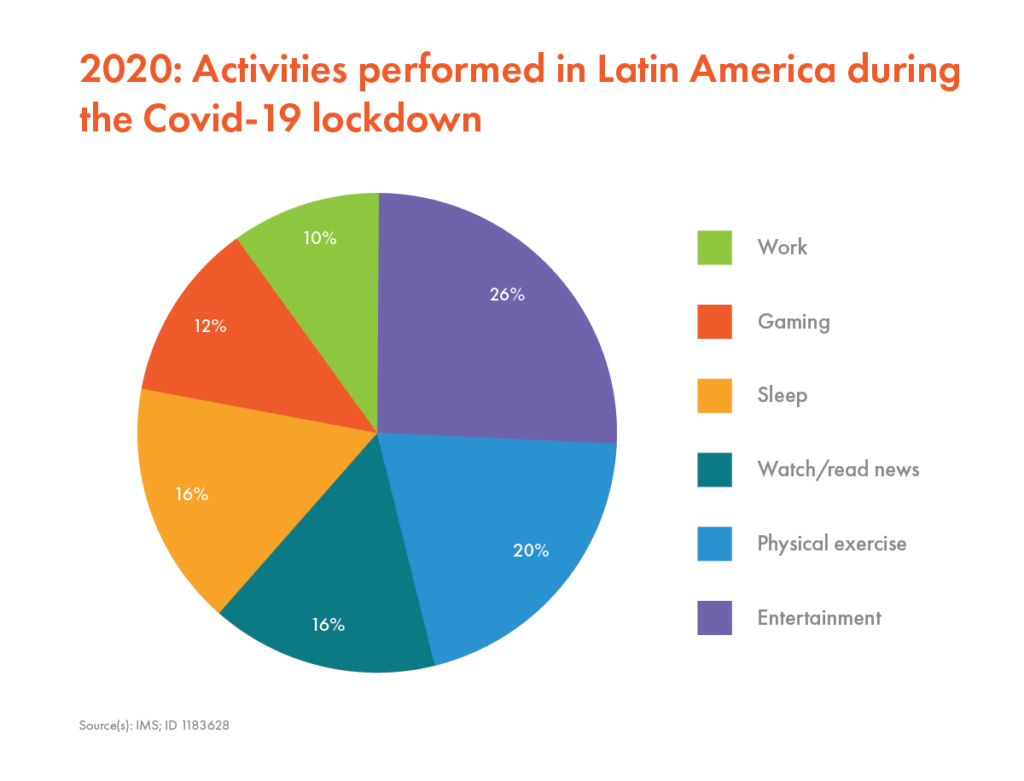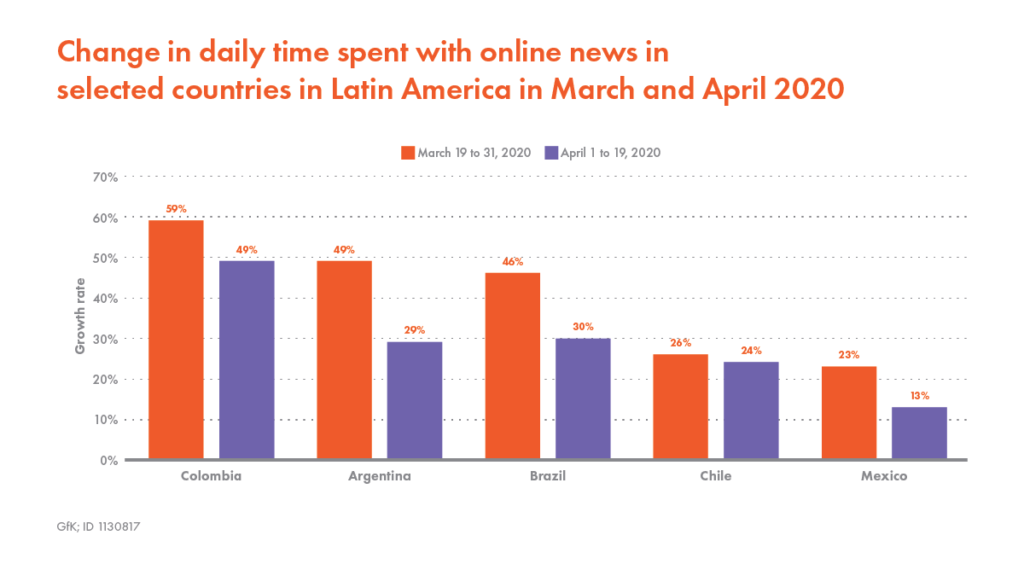It’s no secret that COVID-19 forever changed the world as we know it, including how we do news, advertise, use the internet, and shop — with e-Commerce growing exponentially globally. Likewise, the ways in which we communicate and receive news have also transformed. Recent studies show that consumers are primarily attracted to major news organizations, whereas news from national and local government sources, social media, and other organizations are taken less into consideration.¹
In general, Latin American countries spent a good portion of their time with online news in 2020. For example, Colombia spent the most time with 59%, Argentina (49%), Brazil (46%), Chile (26%), and Mexico (13%).² On the other hand, Brazilians had the most confidence in news TV programs 61%, print newspapers (56%), news radio programs (50%), and other sources.³
During COVID-19, people in Latin America mostly did activities such as entertainment (26%), physical exercise (20%), watching and reading the news, and sleep (16%).⁴ In Buenos Aires, household TV news ratings grew by 15.86 out of a score of 18 and Guatemala had a change in score by 5.8 out of 7.⁵

Media Landscape in Latin America
Changes in media consumption during COVID-19 changed drastically in Latin America. The media usage changed by 40%, and the time in such media reflected a 34% difference.⁶ We cannot talk about how news in Latin America or the world has changed without discussing media and its news consumption trends. People in Brazil watched 298 minutes of TV; in Peru, people watched around 287 minutes, and in Chile, people watched 279 minutes. The time spent watching pay-TV in Central America totaled about 217 minutes, Argentina (242 minutes), Brazil (167 minutes), and Chile (about 201 minutes).⁷
A media industry that also saw a shocking change in numbers was the box office — as the threat of COVID-19, and the obligatory use of masks, caused productions to come to a halt. From January 1 to June 8, 2019, box office revenue was USD$1228.68 million compared to USD$445.14 in January 1 to June 8, 2020.⁸
Print media circulation in Latin America also encoutered a significant change in 2020, declining to -16.3%, with an expected change of -2.7% in 2024.

During the same pandemic period, various countries saw a difference in the daily time people spent with online news. The consumption in Colombia was around 49% to 59%, Argentina (49% to 29%), and Brazil (30% to 46%), to name a few countries.⁹
The pandemic has undoubtedly given media, news, and how we communicate a big push, and various countries are still economically recovering from this crisis. With more people getting vaccinated and systems adapting to the new normal, the way news is produced and consumed has changed and business leaders need to understand the mediums in which to connect with their audiences.
Leveraging our partners in the Worldcom network, we offer companies the option to outsource their international marketing communications strategy and execution to our team of Advisors. To learn more about how we companies go global and reach their goals, feel free to contact our team of trusted advisors.
*This blog post was written by Laura Rentas-Giusti, head of the Comms practice at DuartePino, in collaboration with Luis Avellaneda from Worldcom’s partner firm Realidades in Perú.
References:
1. Edelman; ID 1104365
2. GfK; ID 1130817
3. Datafolha; Tecnoblog (Brazil); ID 1131248
4. IMS; ID 1183628
5. Kantar Ibope Media; ID 1108319
6. Kantar Ibope Media; ID 1116468
7. LAMAC; Statista; WarnerMedia; Kantar Ibope Media; ID 1115907
8. Cine&Tele; comScore (IBOE); ID 260837
9. Statista 2020

